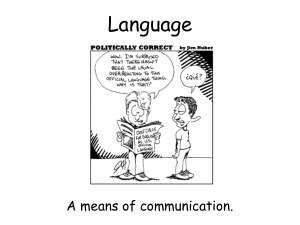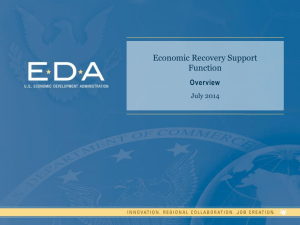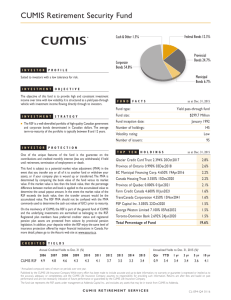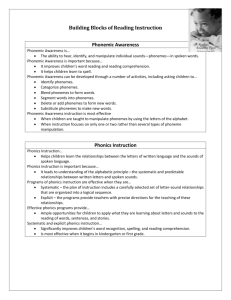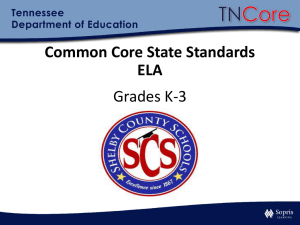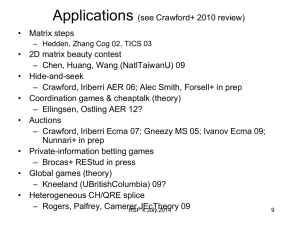Artic-phonology
advertisement
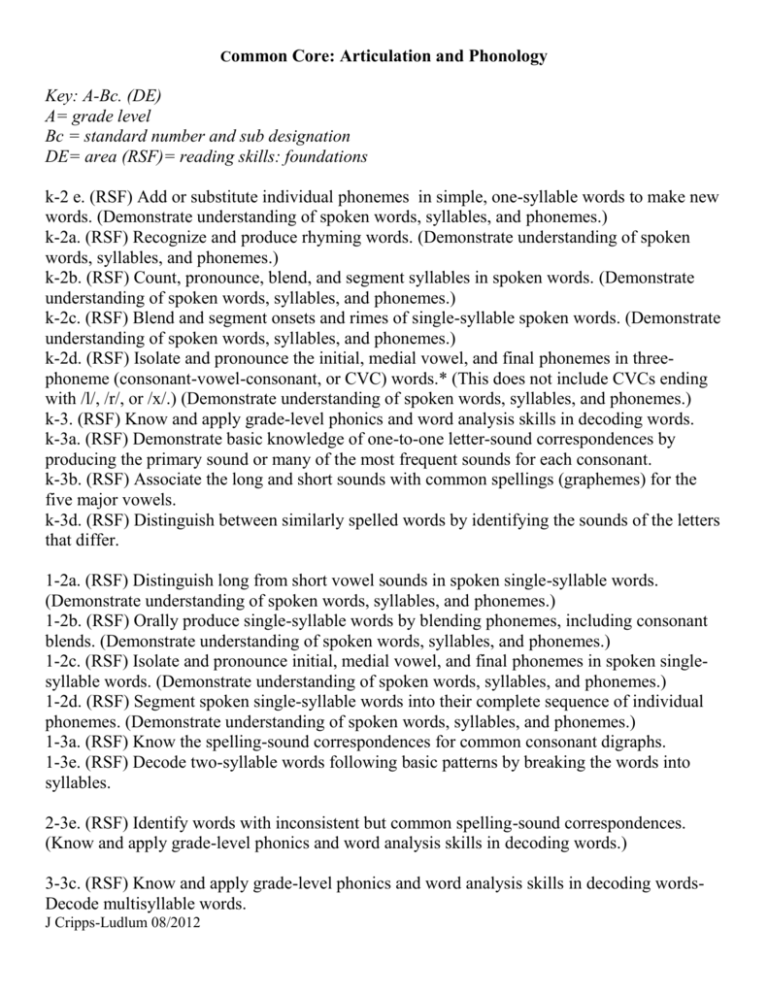
Common Core: Articulation and Phonology Key: A-Bc. (DE) A= grade level Bc = standard number and sub designation DE= area (RSF)= reading skills: foundations k-2 e. (RSF) Add or substitute individual phonemes in simple, one-syllable words to make new words. (Demonstrate understanding of spoken words, syllables, and phonemes.) k-2a. (RSF) Recognize and produce rhyming words. (Demonstrate understanding of spoken words, syllables, and phonemes.) k-2b. (RSF) Count, pronounce, blend, and segment syllables in spoken words. (Demonstrate understanding of spoken words, syllables, and phonemes.) k-2c. (RSF) Blend and segment onsets and rimes of single-syllable spoken words. (Demonstrate understanding of spoken words, syllables, and phonemes.) k-2d. (RSF) Isolate and pronounce the initial, medial vowel, and final phonemes in threephoneme (consonant-vowel-consonant, or CVC) words.* (This does not include CVCs ending with /l/, /r/, or /x/.) (Demonstrate understanding of spoken words, syllables, and phonemes.) k-3. (RSF) Know and apply grade-level phonics and word analysis skills in decoding words. k-3a. (RSF) Demonstrate basic knowledge of one-to-one letter-sound correspondences by producing the primary sound or many of the most frequent sounds for each consonant. k-3b. (RSF) Associate the long and short sounds with common spellings (graphemes) for the five major vowels. k-3d. (RSF) Distinguish between similarly spelled words by identifying the sounds of the letters that differ. 1-2a. (RSF) Distinguish long from short vowel sounds in spoken single-syllable words. (Demonstrate understanding of spoken words, syllables, and phonemes.) 1-2b. (RSF) Orally produce single-syllable words by blending phonemes, including consonant blends. (Demonstrate understanding of spoken words, syllables, and phonemes.) 1-2c. (RSF) Isolate and pronounce initial, medial vowel, and final phonemes in spoken singlesyllable words. (Demonstrate understanding of spoken words, syllables, and phonemes.) 1-2d. (RSF) Segment spoken single-syllable words into their complete sequence of individual phonemes. (Demonstrate understanding of spoken words, syllables, and phonemes.) 1-3a. (RSF) Know the spelling-sound correspondences for common consonant digraphs. 1-3e. (RSF) Decode two-syllable words following basic patterns by breaking the words into syllables. 2-3e. (RSF) Identify words with inconsistent but common spelling-sound correspondences. (Know and apply grade-level phonics and word analysis skills in decoding words.) 3-3c. (RSF) Know and apply grade-level phonics and word analysis skills in decoding wordsDecode multisyllable words. J Cripps-Ludlum 08/2012 4-3a. (RSF) Know and apply grade-level phonics and word analysis skills in decoding words.Use combined knowledge of all letter-sound correspondences, syllabication patterns, and 5-3a. (RSF) Use combined knowledge of all letter-sound correspondences, syllabication patterns, and morphology (e.g., roots and affixes) to read accurately unfamiliar multisyllabic words in context and out of context. J Cripps-Ludlum 08/2012


